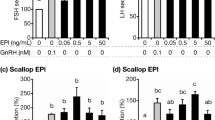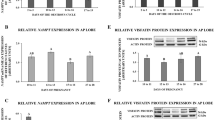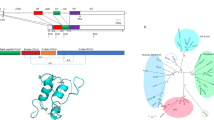Abstract
NUMEROUS physiologically active polypeptides have been found in animals and bacteria, but little has been reported about such substances in plants. A purified substance from an alcohol extract of the herb Capsella bursa-pastoris (Cruciferae), however, exerted contractile activity on the rat uterus which was similar to that of oxytocin and had some characteristics of a polypeptide. Few studies have been made of the chemical composition and pharmacology of this herb, although it has been eaten and used medicinally for haemostasis, diuresis and as an antipyretic in China and Japan for many centuries.
This is a preview of subscription content, access via your institution
Access options
Subscribe to this journal
Receive 51 print issues and online access
$199.00 per year
only $3.90 per issue
Buy this article
- Purchase on Springer Link
- Instant access to full article PDF
Prices may be subject to local taxes which are calculated during checkout
Similar content being viewed by others
References
Kariyone, T., Wakan-Yakuyo-Shokubutsu, 267 (1959).
Boruttau, H., and Cappenberg, H., Arch. Pharmacol., 259, 33 (1921).
Ishida, Y., Chew. Pharm. Bull. (Tokyo)., 12, 872 (1964).
Ishida, Y., Yakugaku Zasshi (J. Pharmacol. Soc. Japan), 81, 1722 (1961).
Author information
Authors and Affiliations
Rights and permissions
About this article
Cite this article
KURODA, K., TAKAGI, K. Physiologically Active Substance in Capsella bursa-pastoris. Nature 220, 707–708 (1968). https://doi.org/10.1038/220707a0
Received:
Issue Date:
DOI: https://doi.org/10.1038/220707a0
This article is cited by
-
Sex hormonal regulation and hormesis in aging and longevity: role of vitagenes
Journal of Cell Communication and Signaling (2014)
Comments
By submitting a comment you agree to abide by our Terms and Community Guidelines. If you find something abusive or that does not comply with our terms or guidelines please flag it as inappropriate.



